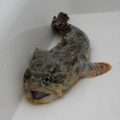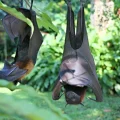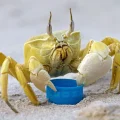If you’ve ever been to the beach and seen strange, spiral-shaped objects lying among the rocks and seaweed, there’s a good chance they were shark eggs. Sharks lay eggs in a variety of shapes and sizes, but one of the most common is that of a spiral or corkscrew-shaped capsule.
Shark eggs are laid by oviparous sharks, which make up about 30% of all species. These sharks lay their eggs externally rater than giving birth to live young like some other types of sharks do. This means that once an egg has been laid, there is no parental care from the mother shark and the egg must be able to survive on its own in the ocean environment until it hatches.
The unique shape of shark eggs provides protection for the developing embryo inside. The spiral shape allows them to be firmly anchored into cracks and crevices in rocks or coral reefs where they are less likely to be swept away by currents or eaten by predators. The egg itself is made up of multiple layers which help protect it from bacteria and parasites as well as allowing it to float so that more oxygen can get inside.
The incubation period for shark eggs can vary greatly depending on the species. Some species may take as little as two months while others may take up to two years before hatching into small larvae (baby sharks). After hatching, baby sharks must fend for themselves with no help from their parents until they are large enough to hunt for food on their own.
Shark eggs are an important part of our ocean ecosystem and provide an essential link between adult sharks and their young offspring. They are an incredible example of nature’s adaptability and resilience in a sometimes hostile environment!
Do Sharks Lay Eggs?
Yes, some species of sharks are oviparous and lay eggs. The “placental” egg-laying sharks have a yolk-sac placenta that provides nourishment to the developing embryos until they hatch. These species include the majority of ground sharks, such as the catsharks and dogfish, as well as the skates and rays. Other oviparous shark species have hard leathery egg cases that contain oil and protein to help keep the embryos safe. These species include some of the larger open-ocean sharks such as makos, threshers, and hammerheads.
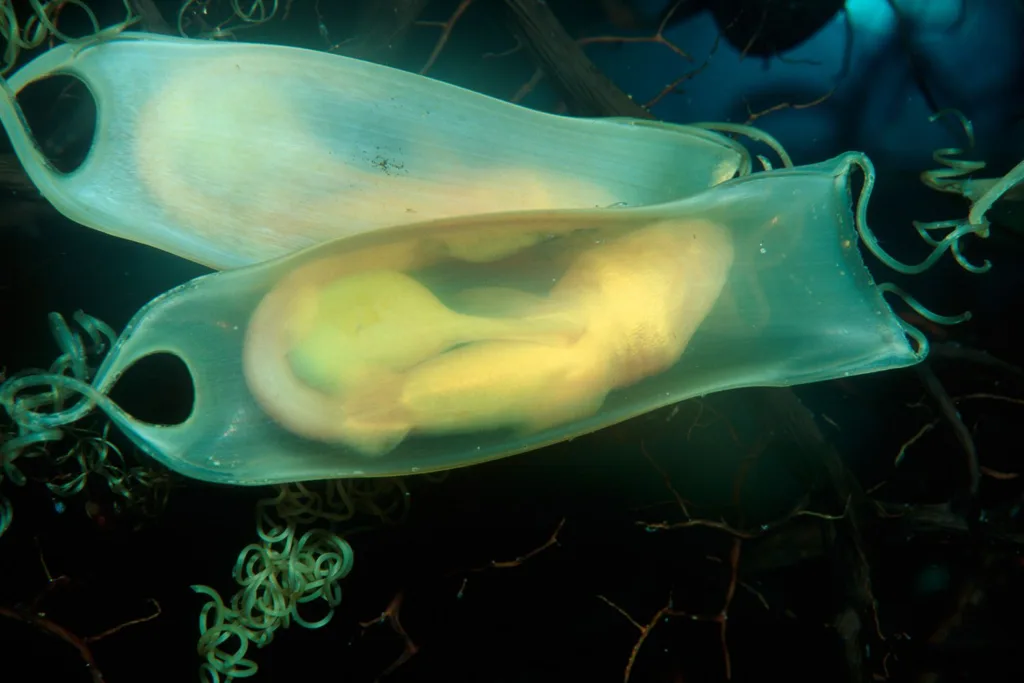
Types of Sharks That Lay Eggs
The cat shark, also known as the dogfish or ground shark, is one of the few species of sharks that lays eggs. Cat sharks are found in tropical and temperate oceans around the world and have a long, slender body with two dorsal fins. They lay egg cases, called ‘mermaid’s purses’, which are usually buried in the sand or mud on the seafloor. The egg cases contain several individual eggs and can range in size from 4 cm to 25 cm. Unlike most other sharks, cat sharks do not give birth to live young – they must lay eggs instead.
Exploring the Unusual Nature of Shark Eggs
The shape of shark eggs is quite unusual, but it serves an important purpose. The Port Jackson shark will pick its egg up in its mouth and then screw the egg into rocks and crevices to anchor it so that it won’t wash away. This helps keep the egg safe until the baby shark hatches. Some other species of sharks also use this technique, although they may use ther pectoral fins instead of their mouth to screw the egg into place. The spiral shape helps secure the egg more effectively, while also providing better water circulation to keep the embryo healthy.
The Rarity of Shark Eggs
Shark eggs are actually quite common, with about 30% of all shark species laying eggs externally. This form of reproduction, known as oviparous reproduction, is relatively rare in the animal kingdom compared to viviparous reproduction (giving birth to live young). This means that each egg is a valuable reproductive resource for the species and must be well-protected in order to ensure the success of future generations. Although shark eggs are not particularly rare, they can be difficult to find due to thir location on the ocean floor and their small size. In addition, some species of sharks have adapted special strategies to protect their eggs from predation and other environmental threats.
Average Size of a Shark Egg
The size of shark eggs varies depending on the species. For example, the egg cases of the small-spotted catshark or lesser spotted dogfish (Scyliorhinus canicula) are approximately 5 cm (2 inches) long, while those of the greater spotted dogfish (S. stellaris) are around 10 cm (4 inches) long. On average, most shark egg cases measure between 5 and 10 cm (2 to 4 inches).
Birth of Shark Babies
Shark babies are born in three different ways. The first is live birth, which involves the mother giving birth to fully-developed pups. Second, sharks can hatch from an egg that has been laid and then fertilized by the father. Finally, some species of shark give birth to a combination of live pups and eggs. These eggs are usually incubated inside the mother until they hatch, at which point the baby sharks emerge. In some cases, such as with hammerhead sharks and nurse sharks, this process also involves surviving gestation without being eaten by their developing siblings.
Do Sharks Hatch from Eggs?
No, not all sharks are born from eggs. While some species of shark are oviparous, meaning they lay eggs, the majority of sharks give birth to live young. Sharks have adapted to a variety of habitats and life cycles which led to the evolution of two reproductive strategies: oviparity and viviparity. Oviparous sharks lay eggs with a tough, leathery shell that hatch after receiving oxygen from the surrounding water. Viviparous sharks, on the other hand, give birth to live young that have been nourished in a placenta-like organ while in the mother’s uterus. Of the over 500 species of shark living in waters aound the world, most are viviparous.
Fertilization of Shark Eggs
Shark eggs are fertilized through a process called internal fertilization. This involves the male shark inserting one of his claspers into the female’s cloaca, which is an opening at the end of her body near her tail. The clasper releases sperm which then fertilizes the female’s eggs. This is usually done while both sharks are swimming parallel to each other, with the male holding onto the female with his teeth and sometimes leaving bite marks along her body.
The Cost of a Shark Egg
The cost of a shark egg varies depending on the species. For example, a Banded Cat Shark Egg (Chiloscyllium sp.) is priced at $79.99, while a Coral Cat Shark Egg (Atelomycterus marmoratus) is priced at $99.99, and an Epaulette Shark Egg (Hemiscyllium ocellatum) is priced at $999.99. You can also purchase adult Banded Cat Sharks (Chiloscyllium punctatum) for $179.99 each.
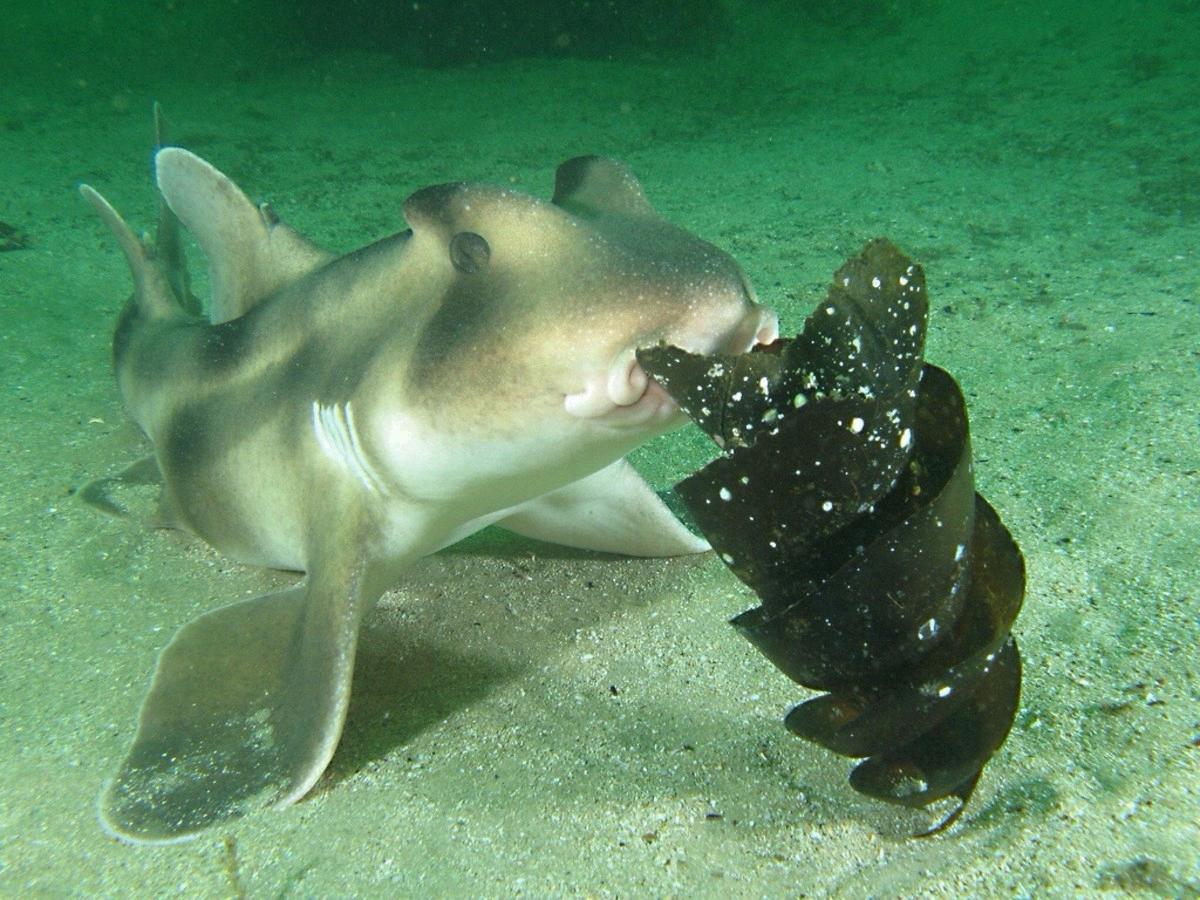
Source: owlcation.com
Are Shark Eggs Edible?
Yes, shark eggs are edible. Unfertilized shark eggs are a source of nutrition and can be eaten raw or cooked. They have a mild flavor and are crunchy in texture. The egg cases, known as “mermaid’s purses,” are not edible as they contain the developing embryo; however, the unfertilized eggs inside the cases can be harvested for consumption. Shark eggs should only be harvested from sustainable sources to ensure the health of shark populations.
What Is Contained Within a Mermaid’s Purse?
A mermaid’s purse is the egg capsule of some types of sharks and their relatives. Inside each pouch are several hundred to several thousand tiny eggs, which can range in size from a few millimeters to a centimeter in length. The eggs are usually surrounded by two leathery membranes, which protect them from predators, parasites, and other environmental factors. The inside of the pouch may also contain some yolk material, which helps nourish the embryos until they hatch. After hatching, the young fish will drift away with the currents until they reach maturity.
The Rarest Shark Egg: An Overview
The rarest shark egg is that of the Nurse Shark. These eggs are found in tropical and subtropical waters in the Indo-Pacific, Atlantic, and Caribbean. They are typically laid in shallow-water bays or lagoons with sandy bottoms. Nurse sharks have been observed spawning in groups of up to seven individuals with each female laying up to 200 eggs at one time.
The eggs are large and brownish-orange in color and measure around 2 inches (5 cm) long. Each egg is encased in a tough, leathery capsule containing two cells that can survive out of water for several months. The egg capsules are glued to rocks or other underwater objects using secretions from the female’s body. After hatching, the developing embryos feed on yolk until they reach a size suitable for life as juvenile sharks.
This particlar Nurse Shark egg was found by Erivaldo Alves Silva, also known as Nego Noronha, in Fernando de Noronha off the coast of Brazil — making it an extremely rare find! When fully grown, this species reaches a maximum length of 10 feet (3 m).
Hatching Time for Shark Eggs
Shark eggs typically take between 6-9 months to hatch, depending on the species. During this time, the female will lay her eggs and ensure they are securely fixed in a safe place. The eggs are encased in a tough ‘leathery’ eggcase that helps protect them while they develop. When the eggs are ready to hatch, the embryos inside will break through the eggcase and emerge as juvenile sharks.
What Are Baby Sharks Called?
Baby sharks are generally referred to as ‘pups’. Unlike other animals, the way that baby sharks come into the world varies between species; some give birth to live pups, while others lay eggs. For example, the female whale shark lays eggs encased in a tough leathery skin, much like a chicken would.
Do Sharks Give Birth Through Their Mouths?
No, sharks do not give birth through their mouth. Sharks typically reproduce by laying eggs, a process known as oviparity. The female shark will deposit the fertilized eggs in a secure location such as a crevice in coral or rock, or sometimes even attach them to kelp. For some species of sharks, the male will then come aong and release sperm over the eggs. The eggs are subsequently left to develop on their own and hatch when fully developed. In some cases, such as Port Jackson sharks, they may carry the egg cases in their mouth until they find a safe spot.
Conclusion
In conclusion, it is clear that sharks display a great diversity in their reproductive modes. While some species of sharks lay eggs that develop and hatch outside of the mother’s body, the majority of shark species give birth to live young. The eggs laid by oviparous sharks often have a unique shape which helps them to anchor themselves to crevices and rocks so they do not get washed away. This demonstrates the adaptability and resilience of these incredible animals.

